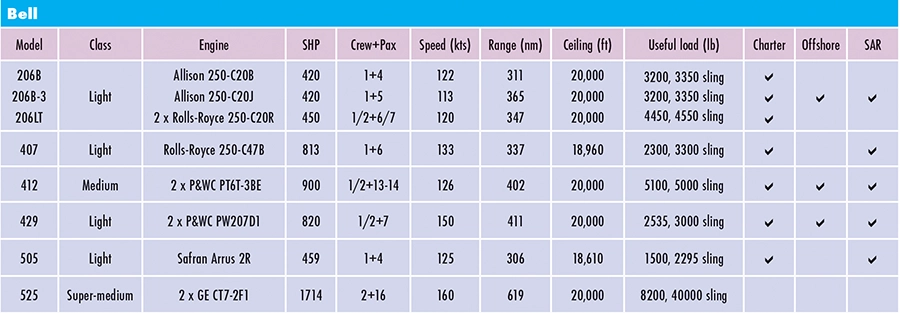Helos for charter, offshore work, and SAR
Versatile rotorcraft can carry out more than a single mission.
By Owen Davies
Contributing Writer
On the surface, operational requirements in these 3 headline work categories seem almost completely different – and yet many helicopters routinely take onat least 2 of these mission categories. Some are at home in all 3. Yet simple location often decides which helicopters get which jobs.
For charters in the US, small helicopters are common, including the Robinson line, which is relatively unknown in Europe. European operators often favor small and mid-range helos. Leonardo models are common, in part because their dealer in France is remarkably successful. In the UK, medium twins are preferred, including the Sikorsky S-92.
Offshore operations are equally diverse. The Gulf of Mexico has many shallow platforms, so single-engine helicopters are common in the US. But they are rare in Europe, where the Leonardo AW189 and Airbus H175 are prevalent. The North Sea demands longer ranges, and all-weather operations are a must. The Sikorsky S-92 is popular there, with Leonardo AW139s dominating the medium category, and Airbus H175s and Leonardo AW189s also in use.
The US Coast Guard operates a variety of helicopters for search and rescue (SAR). In Europe, the Leonardo AW139 and AW189 and the Airbus H175 and H225 are common, with the H225 favored in the harsh North Sea environment. However, sometimes it is just a matter of who got the contract. When the Norwegian Coast Guard needed helicopters, Leonardo won the bidding. In Norway, the AW101 is known today as the SAR Queen.
In all, the helicopters chosen for charter, offshore, and SAR missions overlap to a surprising extent.
Airbus
These helicopters all serve at least one of the markets. Efficient performance, easy access, and panoramic windows make the H125 a natural for charters and tourist ops. Yet it has also carried out 3 rescues from the top of Mount Everest, landing and taking off at FL290.
With similar virtues in a slightly larger package, the intermediate single H130 is the leading helicopter for aerial tourism in the US. Rear passengers even sit on a raised platform, making it easy to see over those in front.
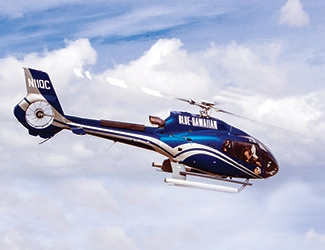
The H135 and H145 light twins are versatile performers. The H135 has built a reputation for mountain rescue missions and disaster relief. The H145 has a long history of working offshore oil and gas platforms.
They serve windfarms routinely, and recently proved they could deal even with turbines floating on platforms cabled to the seabed, which behave as moving targets due to wind and water waves.
The helicopters hoisted cargo in almost 50-kt winds, then lowered cargo and 2 crew members onto turbines in 30-kt winds. The water below was at sea state 6, with gale winds and waves sometimes reaching 29 ft. Airbus built its emergency flotation system for those conditions.
The H175 is a mainstay of oil and gas work, carrying up to 16 crewmen and making an automatic rig approach. Yet it too can be equipped for competent SAR work.
The H225 Super Puma is a do-it-all heavy twin. It can carry 2+24 or a 11,900-lb load up to 452 nm. It is used for charter flights with up to 19 passengers in air-conditioned comfort, or 11 in VIP luxury. Working offshore oil and gas rigs, it can carry a big crew or nearly 12,000 lb of equipment and supplies.
It is even agile enough to serve offshore windfarms. And few helicopters can equal its range or all-weather service. When necessary, it can carry 11 stretchers, 5 medical personnel, and anything up to a full ICU.
Bell
Bell’s light and medium aircraft are all popular in the charter and tourism markets, but most can handle more challenging work. In Argentina, for example, the Air Force and Army use the 407GXi for SAR in mountainous terrain.
The 412 is popular for oil and gas support in the North Sea. It is also used for offshore missions in Mexico and Abu Dhabi, and for SAR in southern Europe, Somalia, and Japan.

The 429 is equally versatile. In 2023, Bell delivered one for offshore operations in Cameroon, while a company in Guyana is slated to receive one for offshore use in late 2025. The Swedish National Police use Bell 429s to carry out nearly 500 SAR missions per year in mountainous regions. Air Zermatt, in Switzerland, uses 2 Bell 429s to perform about 2000 rescue missions a year at altitudes up to 15,000 ft.
Several operators have used the 505 Jet Ranger X for small-load offshore work in the oil and gas sector, notably Nautilus Aviation in Australia. An operator in Montana reports using it extensively for mountain SAR.
The 525 Relentless, nearing certification, looks like a strong contender for VIP charters, oil and gas work, and SAR once it becomes operational. So far, its only firm commitment is an agreement with Equinor, a Norwegian energy company, for 10 units to be used in the North Sea. Deliveries are expected to begin in 2026.
Leonardo
This company’s helicopters are nothing if not versatile. Most are common in at least 2 of our work categories – some in all 3.
The AW101 is often used for luxury charter and executive transport. It is common in offshore operations in the North Sea, the UK, and Australia. Even Leonardo itself has used the AW101 for offshore transport and to support windfarms. In addition to Norway, both the Italian Air Force and the UK Royal Navy use the AW101 for SAR.
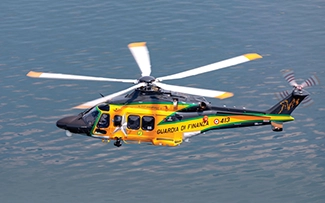
Many members of this company’s current product line have worked in the charter market. In both its Trekker and GrandNew versions, the AW109 light twin provides a quiet, vibration-free ride for up to 6 passengers.
Speed and range have made it a favorite for modest-sized parties making long trips. Executive configuration reduces the AW139 to 8 passengers, but its speed, range, and spacious cabin make it a top choice for charters by the well-heeled. The AW169 and AW189 are used extensively for charters by larger groups.
Leonardo’s light aircraft are also used for offshore missions to oil and gas rigs. The AW109 Trekker supports energy platforms in the Adriatic and Sicilian Seas, while the AW169 is well established in the offshore segment. However, the AW139 all but owns the offshore market. An estimated 1/3 of the AW139 fleet supports oil, gas, and wind platforms. HeliService is a good example.
Based in Germany, the company earns a big piece of its living by ferrying technicians and entire work crews to oil rigs and windfarms. Its chosen mounts are the AW139 for up to 12 passengers, and the AW169 for 8 or fewer. The company carries out roughly 10,000 hoist operations per year. It spends a lot of time working at windfarms.
The AW189 is another triple threat, offered for charter in the UK, the Middle East, and Southeast Asia; supporting oil and gas rigs in the Gulf of Mexico, Alaska, Australia, and Nigeria; and carrying out SAR missions for HM Coastguard in the UK, the Irish Coast Guard, and the Malaysia Maritime Enforcement Agency. For almost any mission, the AW189 is probably a good option.
Robinson
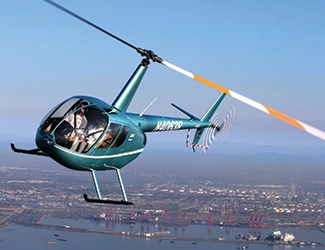
With comfortable seats, high visibility, and air conditioning available for the R44 and standard in the R66, this company’s helicopters are an obvious fit for charter flights and tourist hops. They are often used in those roles, both in the US and as far from home as Greece and South Africa.
ABC Heli, in Australia, uses the R66 to deliver personnel and materials to offshore drilling rigs, and often to desalination plants all over Australia.
Robinson helicopters are mentioned often as being suitable for short-range SAR and the coordination of larger searches.
A noteworthy operator is Indonesia’s National Agency for Disaster Countermeasures.
The world’s first helicopter maker might almost adopt the business slogan: “If we build it, it can do anything.” It is almost true.
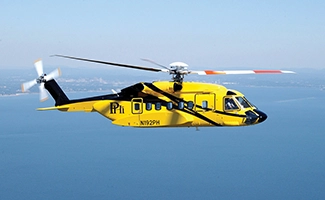
We have not seen the S-70 offered for commercial charter. Its high speed, seating for 11 passengers, and useful cargo capacity have won it offshore assignments in the North Sea, Australia, and the Gulf of Mexico.
The S-76 brings adequate speed and much better range to all 3 of our work categories. Operators offer it as luxury transport in New York, South Florida, and Texas. It is often seen on oil rig duty in the North Sea, Australia, and the Gulf of Mexico. The Royal Canadian Air Force uses it for SAR. This is one versatile helo.
Few aircraft have better reputations than the S-92. A spacious, comfortable cabin, good speed, and long range attract charters from high-profile clients around the world. Seating for up to 19 passengers and outstanding cargo capacity make it a favorite for transport to offshore energy rigs. These characteristics have also earned it widespread use for SAR from the US to Canada and Australia. In the UK, over the course of 1 year, S-92s carried out 2700 SAR missions, rescuing more than 1700 individuals.

